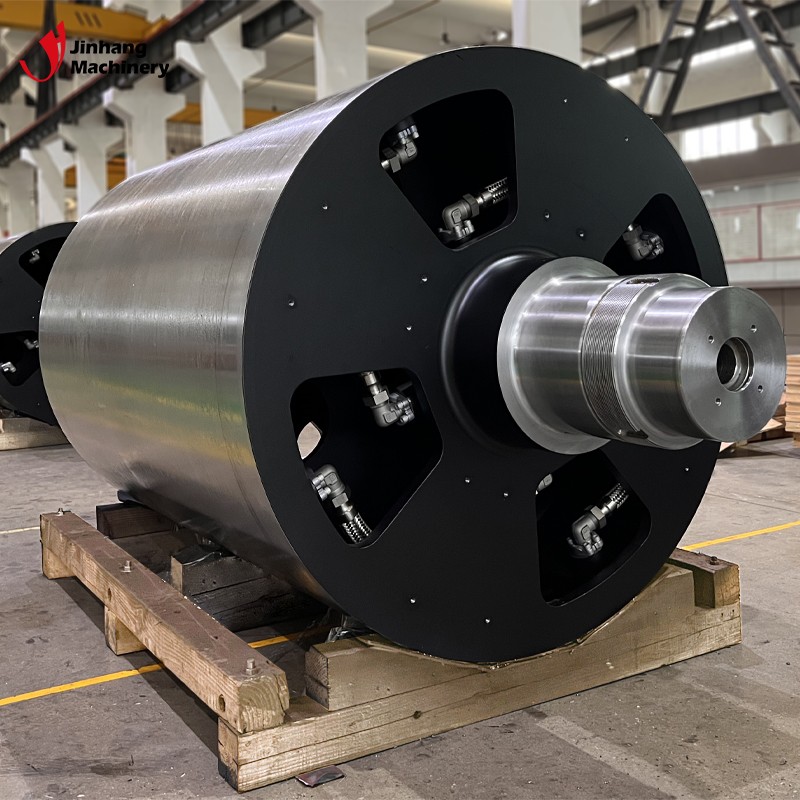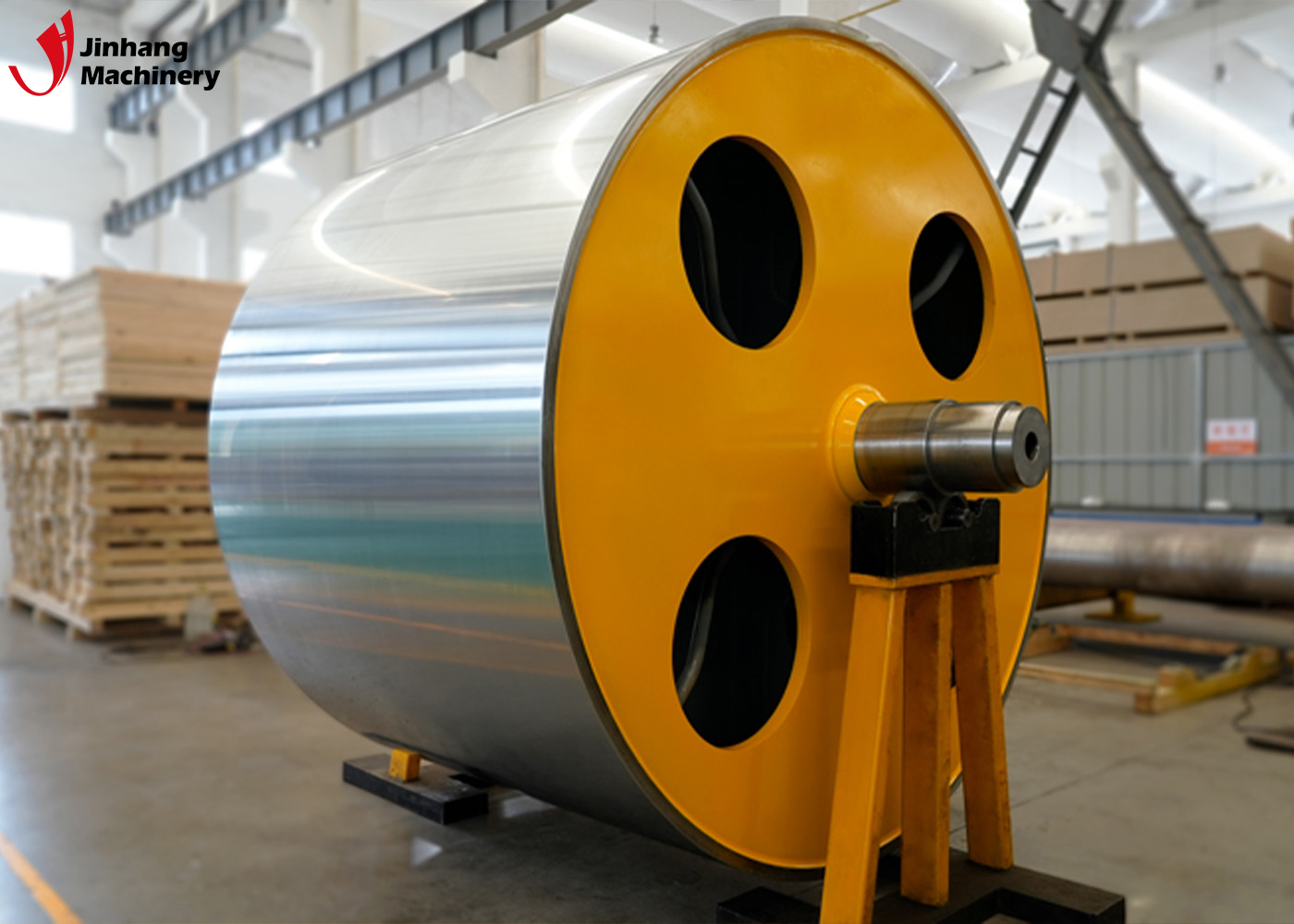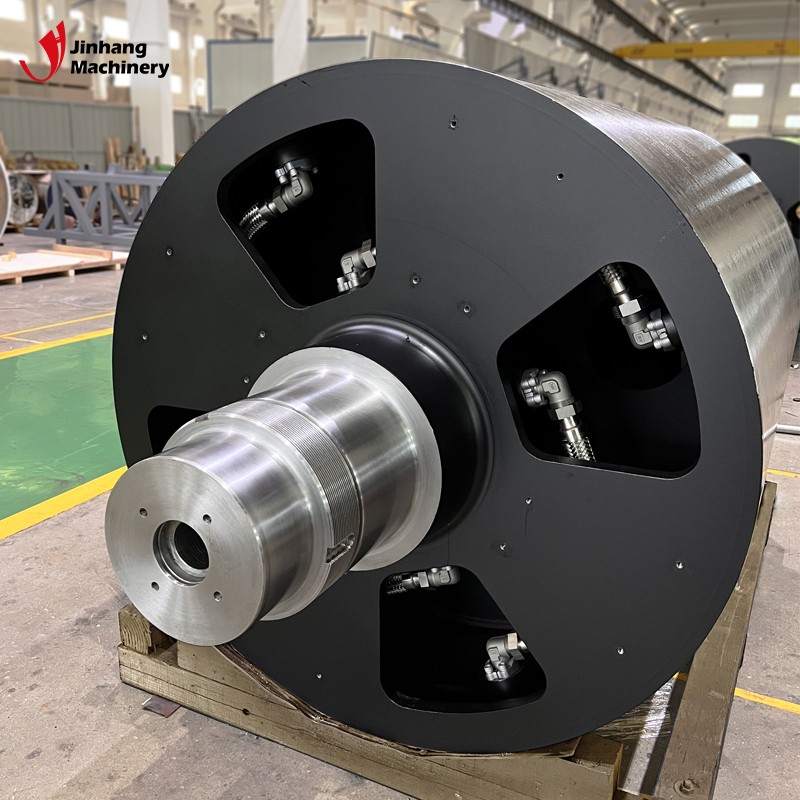Why does the rubber industry need to use heating rollers?
In the rubber industry, heating rollers, as key processing equipment, play an important role in multiple links. Its main function is to process rubber materials by heating and temperature control, thereby improving production efficiency and product quality.
This article will discuss in detail why the rubber industry needs to use heating rollers and in which links of rubber processing this equipment is needed.

What are the basic characteristics of heating rollers?
Heating rollers are usually made of high thermal conductivity materials and equipped with a precise temperature control system to ensure uniform and stable surface temperature. This equipment has the main characteristics of efficient heat conduction, precise temperature control system, corrosion and wear resistance, and high mechanical strength.
1. Efficient heat conduction: Heating rollers are made of high-quality materials such as aluminum alloy or stainless steel, with excellent heat conduction performance, which can quickly and evenly heat rubber materials.
2. Precise temperature control system: Through the built-in temperature control system, heating rollers can achieve precise temperature control to ensure temperature stability during processing.
3. Corrosion and wear resistance: The surface of the heating roller is usually specially treated, with good corrosion and wear resistance, and can be used for a long time in harsh working environments.
4. High mechanical strength: The heating roller has high mechanical strength and can withstand high temperature, high pressure and high load working conditions, ensuring its stability and reliability in long-term work.

Which link in the rubber industry requires a heating roller?
Heating rollers play a key role in multiple links of rubber processing. For example: mixing and calendering process (to make the rubber material evenly mixed), extrusion molding process (to maintain proper fluidity and plasticity), vulcanization process (to make the rubber material chemically react).
1. Mixing and calendering process:
In the mixing and calendering process of rubber, heating rollers are widely used in mixers and calenders. The main function of the heating roller is to make the rubber material evenly mixed by heating and calendering to achieve the required physical and chemical properties.
● Mixing process: In the rubber mixing process, the raw materials need to be fully mixed to ensure the uniformity and stability of the rubber. Heating rollers can provide uniform heat, so that the rubber material is fully mixed at high temperature, improving the mixing efficiency and quality.
● Calendering process: During the rubber calendering process, the heating roller can control the temperature and thickness of the rubber material to ensure the dimensional accuracy and surface quality of the calendered product. By using a heating roller, the rubber material will not cool and harden during the calendering process, thereby improving production efficiency and product quality.
2. Extrusion molding process:
During the rubber extrusion molding process, heating rollers are widely used in extruders and extrusion molds. The main function of the heating roller is to keep the rubber material in proper fluidity and plasticity during the extrusion process through heating and temperature control.
● Extrusion process: During the rubber extrusion process, the rubber material needs to be formed by the screw and mold of the extruder. The heating roller can provide uniform heat, so that the rubber material maintains an appropriate temperature during the extrusion process, ensuring the shape and dimensional accuracy of the extruded product.
● Mold heating: In the extrusion mold, the heating roller can keep the rubber material at an appropriate temperature during the molding process by heating the mold, avoiding cooling and hardening, thereby improving the surface quality and physical properties of the extruded product.
3. Vulcanization process:
During the vulcanization process of rubber, heating rollers are widely used in vulcanizers and vulcanization molds. The main function of the heating roller is to make the rubber material react chemically during the vulcanization process through heating and temperature control to form rubber products with high strength and high elasticity.
● Vulcanization process: During the rubber vulcanization process, the rubber material needs to react chemically at high temperature to form vulcanized rubber with high strength and high elasticity. The heating roller can provide uniform heat to keep the rubber material at an appropriate temperature during the vulcanization process, ensuring that the vulcanization reaction is sufficient and uniform.
● Vulcanization mold heating: In the vulcanization mold, the heating roller can keep the rubber material at an appropriate temperature during the vulcanization process by heating the mold, avoiding cooling and hardening, thereby improving the surface quality and physical properties of the vulcanized product.

What are the advantages of heating rollers in the rubber industry?
Advantages of heating rollers in the rubber industry: improve product quality (improve product surface quality and physical properties), improve production efficiency (reduce failure rate and defective rate), extend equipment service life (reduce equipment wear), and adapt to a variety of rubber materials (natural rubber, synthetic rubber and special rubber, etc.).
1. Improve product quality:
The efficient heat conduction and precise temperature control system of the heating roller can significantly improve the quality of rubber products. By using the heating roller, the rubber material can maintain the appropriate temperature and fluidity during the processing, avoid cooling and hardening, thereby improving the surface quality and physical properties of the product.
2. Improve production efficiency:
The heating roller can provide uniform heat and stable temperature during the rubber processing process, ensuring the efficiency and stability of the production process. By using the heating roller, the failure rate and defective rate in the rubber processing process are significantly reduced, and the production efficiency and economic benefits are greatly improved.
3. Extend equipment service life:
The heating roller is usually made of high-strength materials and is specially treated to have a long service life and good corrosion and wear resistance. By using heated rollers, the wear and failure rate of rubber processing equipment is significantly reduced, the service life of the equipment is extended, and the maintenance cost and downtime are reduced.
4. Adapt to a variety of rubber materials:
The heated roller has good adaptability to a variety of rubber materials, including natural rubber, synthetic rubber and special rubber. By using heated rollers, rubber processing companies can produce a variety of high-quality rubber products to meet different market needs.

Conclusion
The heated roller plays a key role in the rubber processing industry with its efficient heat conduction and precise temperature control system. Whether in mixing and calendering, extrusion molding, or vulcanization process, the heated roller can significantly improve the quality and production efficiency of rubber products.
In the future, with the continuous advancement of rubber processing technology and the continuous growth of market demand, heated rollers will play a more important role in the rubber industry, helping rubber processing companies achieve the goal of efficient production and high-quality development.
